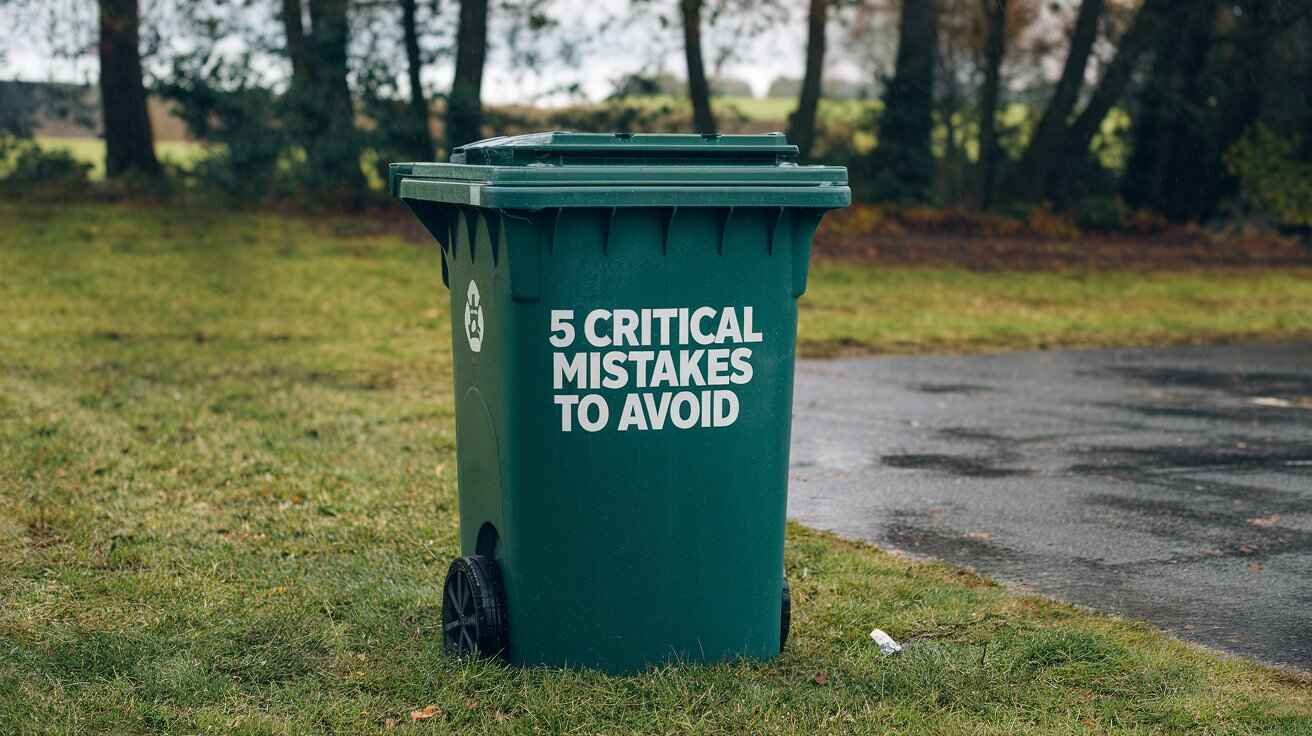Avoiding common mistakes when using 240 litre 2 wheel plastic bins is essential for maintaining their reliability and extending their lifespan. These larger capacity bins have become increasingly popular for residential and light commercial use, offering ample space for waste management while remaining manageable for regular collection. With their durable construction and convenient design, these bins are designed to withstand frequent use and varying weather conditions. However, even the most robust bins can suffer premature wear and damage if not used correctly. By being aware of and avoiding certain pitfalls, users can ensure their bins remain functional, hygienic, and efficient for years to come. Understanding these common mistakes not only protects your investment but also contributes to a cleaner, more organized waste management system. Let’s explore five key errors to steer clear of when using your reliable 240 litre2 wheel plastic bins, ensuring you get the most out of these versatile waste containers.
Overloading the Bin
Exceeding the bin’s weight capacity is a common mistake that can lead to structural damage and collection issues. The 240 litre capacity might tempt users to fill the bin to the brim, but this can cause significant problems. Overfilled bins strain the plastic body, potentially leading to cracks or warping. The excess weight also puts undue stress on the wheels and axles, which may result in breakage or difficulty in maneuvering. Moreover, overloaded bins often prevent the lid from closing properly, exposing the contents to the elements and attracting pests. During collection, an overweight bin may be rejected by waste management services or could cause injury to collection workers. To avoid this, distribute heavy items across collection cycles and be mindful of the bin’s weight limit, typically around 96 kg for a 240 litre bin. If you consistently find your bin overflowing, consider increasing your collection frequency or acquiring an additional bin rather than overloading.
Neglecting Regular Cleaning
Failing to clean the bin regularly can lead to hygiene issues, unpleasant odors, and accelerated deterioration of the bin’s interior. It’s easy to adopt an “out of sight, out of mind” approach once the lid is closed, but neglecting cleanliness can have consequences. Accumulated grime and bacteria not only create foul smells but can also attract pests and potentially harm health. Over time, the buildup of residue can corrode the bin’s interior, shortening its lifespan. Avoid this mistake by establishing a regular cleaning routine. At least once a month, empty the bin completely and wash it with a mixture of warm water and mild detergent or a specialized bin cleaner. Use a long-handled brush to scrub all surfaces, paying extra attention to corners and crevices. Rinse thoroughly and allow the bin to dry completely before next use. This simple practice will keep your bin hygienic, odor-free, and in good condition for longer.
Improper Waste Disposal
Disposing of inappropriate items or failing to bag waste properly can damage the bin and create health hazards. It’s crucial to remember that not everything can or should go into your general waste bin. Avoid disposing of hazardous materials such as batteries, chemicals, or electronics in these bins. These items can react with other waste, potentially causing fires or releasing harmful fumes. Similarly, disposing of liquids without proper containment can lead to leaks, making the bin difficult to clean and potentially attracting pests. Another common mistake is throwing sharp objects directly into the bin without proper wrapping, which can puncture the bin’s interior or garbage bags. Always bag your waste securely before placing it in the bin, and wrap sharp items in newspaper or cardboard. For specialized waste, research local disposal facilities or collection services that can handle these items safely and legally.
Ignoring Lid and Wheel Maintenance
Neglecting the bin’s moving parts, particularly the lid and wheels, can lead to functionality issues and shortened lifespan. The lid plays a crucial role in containing odors, preventing pest intrusion, and keeping rainwater out of the bin. Ignoring signs of wear or damage to the lid can result in these problems going unchecked. Similarly, the wheels are essential for the bin’s mobility, and neglecting them can make the bin difficult or impossible to move. Regularly inspect the lid for cracks or warping and ensure it closes securely. Check that the hinges are functioning smoothly and are free from rust or debris. For the wheels, make sure they rotate freely and are firmly attached to the bin. Remove any accumulated dirt or debris from the wheel mechanisms and occasionally lubricate the axles to maintain smooth operation. Addressing issues with these components promptly can prevent more significant problems down the line and ensure your bin remains easy to use.
Exposing Bins to Extreme Conditions
Leaving bins exposed to harsh weather conditions or direct sunlight for extended periods can cause material degradation and reduce their lifespan. While 240 litre bins are designed to withstand outdoor use, prolonged exposure to extreme elements can take its toll. Constant exposure to direct sunlight can cause the plastic to become brittle and fade over time, potentially leading to cracks or breaks. Similarly, leaving the bin in areas prone to flooding or constant moisture can lead to water damage and accelerated wear. In regions with extreme cold, allowing water to freeze inside the bin can cause expansion and potential cracking. To avoid these issues, try to store your bin in a shaded area when not in use, particularly during the hottest parts of the day. If possible, keep it under a shelter or against a wall to provide some protection from rain and wind. During severe weather events, consider moving the bin to a more protected location if feasible. By being mindful of your bin’s exposure to the elements, you can significantly extend its usable life and maintain its structural integrity.
Also Read: Top Trends in Dining Tables for Luxurious Dubai Interiors






